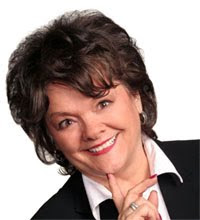Teacher's image - Setting the example
There has been growing concern regarding teacher's clothing and appearance in the workplace. Because it’s often hard to tell the teacher from the student, more and more schools are designing teacher dress codes to give direction.
In the words of one teacher: "I believe if you want to be known as a professional, you need to dress and act like a professional." Makes sense. It sounds simple. Yet, somewhere along the way society has wooed us into thinking that our appearance isn't that important, as long as its 'fun', trendy and comfortable (part of the ‘me-only mindset). As a result, it's sometimes really easy to cast our self-discipline and pride out the window. After all, we're all crunched for time and just doing the best we can. Or are we?
Teachers are not the only ones who are struggling with this issue. Businesses today are pulling their hair out with dress code issues. One of my clients is a CPA firm. They felt that due to a lack of professional attire on the part of associates, they had stopped inviting associates into their meetings with their high level clients. These meetings were seen by management as a coveted training ground for upcoming leadership within the firm. In addition, they felt the professional image of their firm was at stake -- affecting bottom lines.
I believe the current trends have taken us down a road which has produced a state of
casual indifference for many. Casual indifference has a domino effect that becomes detrimental to the student, and ultimately our society. Indifference is a state of lacking in motivation, inspiration or integrity. We already know that when knowledge of the English language was comparable, immigrants more often aced the ACT test while middle class children of college graduate parents pulled C’s and D’s – with the determined difference between the two groups being motivation – or the lack of it. University of Pennsylvania researchers suggest that the reason so many U.S. students are ‘falling short of their intellectual potential’ results from their failure to exercise self-discipline”.
Studies say that people will remember what they see three times longer than what they hear. What does that mean for the teacher? It means that how one looks sends a message loud and clear. One's image declares a ranking of values, pride and self-discipline. (Aren't these the same things we are trying to instill into the students?) It means that one's impact as a teacher relies significantly on how the teacher is perceived. And, it means if one wants to create an atmosphere of respect, raise the bar on results-based teaching and on the teaching profession as a whole, one might want to take heed.
At a school district where I presented an in-service on my Power of a Professional Image program, the attendees were intrigued with all th that can impact our roles in a big way: i.e. Importance of color; verbal and nonverbal ways a person can be more powerful; how to compliment your behavior style by attire choices for maximum effect; ways to be professional in a casual world—inexpensively, ways to send different messages to different grade levels, etc. etc. (It was interesting to note that even the coaches hung around afterwards with questions.)
So save the flip flops for the weekends. Generation-Y needs role models instilling pride, respect, and self-discipline. This sets the tone for achievement--and in the teaching profession, that's a good thing!
D. Kinza Christenson, The Performance Pro
Author of Book: 193 Survival Tips for a Professional Image
Keynote Speaker * Trainer
800-575-6817

